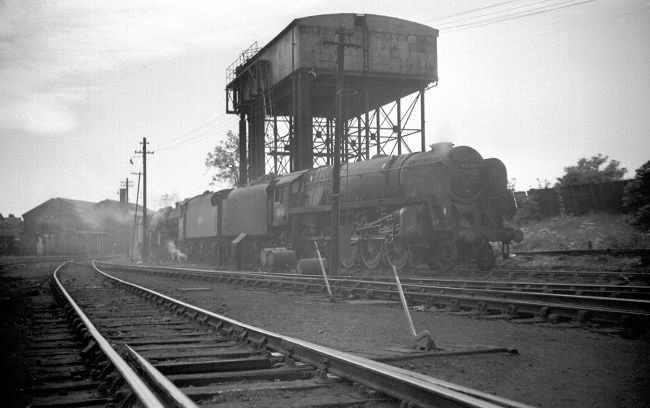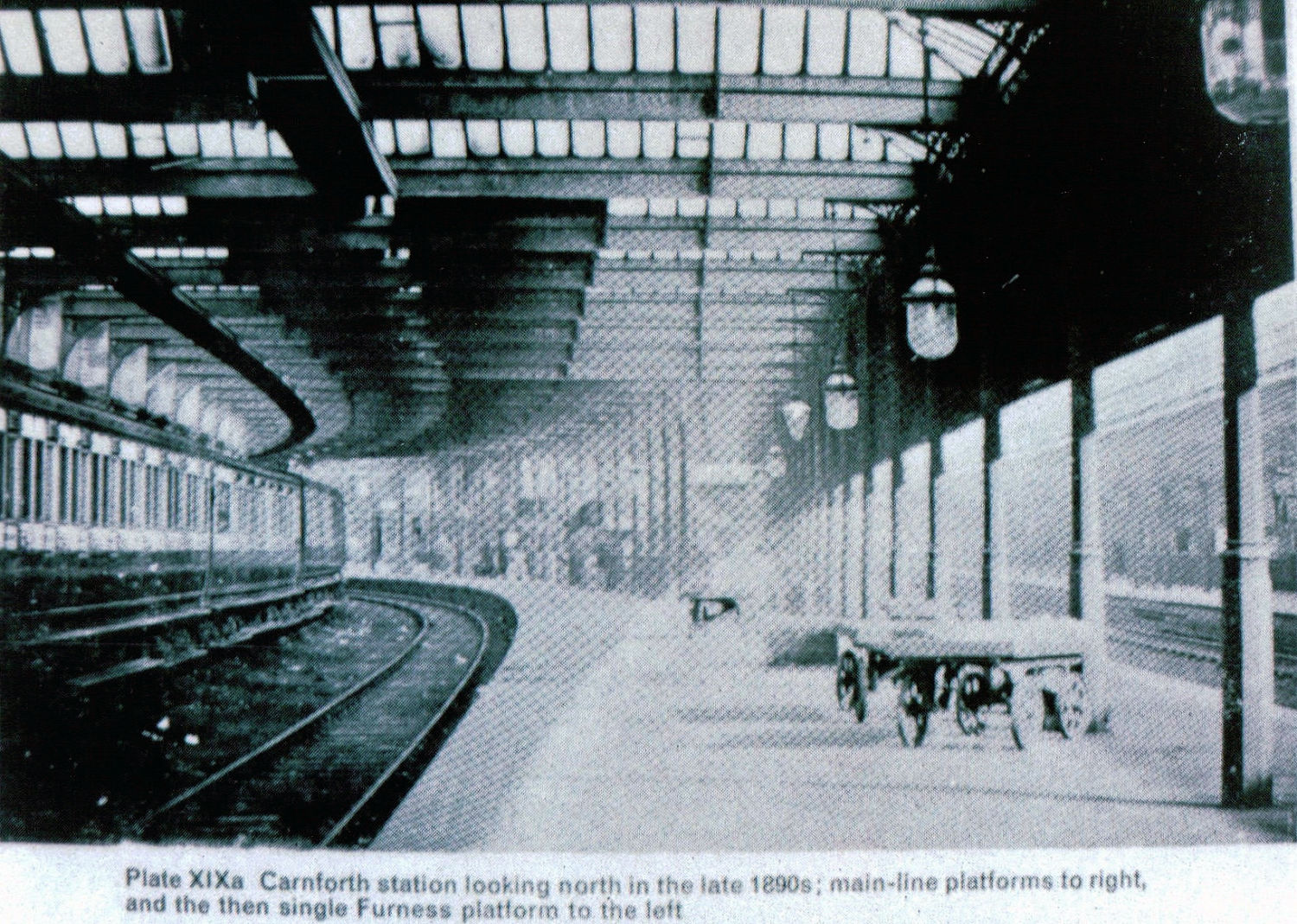Carnforth
![]()
![]()
Carnforth
Early History.
How are we to account for the name Carnforth ? According to one source it is derived from the Celtic words Cairn, a memorial heap of stones, and Forth, a haven or harbour. Another source has its derivation from Kerne (old name for the River Keer) and Forde (a river crossing). It seems that the local branch of freemasons favours the latter, as the old National School, where its meetings are held, now bears the name Kerneford Hall. There is little else to relate of the early history, except that the future King Charles II is said to have encamped his army in the vicinity in 1651, and in a gravel pit near the railway station a number of human bones, skulls and even whole skeletons were at one time found just below the surface.
Growth.
Until well into the nineteenth century Carnforth was an insignificant element in the parish of Warton, with most of the dwellings lining what was then the main road (now North Road) . One or two of these buildings dating from the seventeenth century still exist. Things changed with the building of a new main road (the A6) and , more importantly, the coming of the railways. In 1846 the Lancaster & Carlisle Railway built a wayside station which gained much more importance in 1857 when it became a junction with the arrival of the Ulverstone & Lancaster Railway, and even more so in 1867 when the Furness & Midland Railway provided a link to Wennington and so on to Leeds. By the early 1860s Carnforth was seen as an ideal location for an iron works, and in 1866, largely thanks to Mr. H.J. Walduck of Manchester, the Carnforth Haematite Iron Company gave added impetus to Carnforth’s growing importance. A steel works was set up later, but it was less successful, lasting for only a few years before closure in 1889.
In 1873 Christ Church was built,so that C. of E. parishioners did not have to travel to Warton, and other denominations were well catered for, though a cemetery was not provided until 1925. By this time Carnforth had far outstripped its ‘parent’ Warton in importance, though many of the iron workers lived in Millhead, just the other side of the River Keer and were therefore technically in Warton. Edward Barton,the manager of the Iron Works, was a driving spirit, much to the fore in concerns such as Carnforth Gas Company (1872) and Carnforth Water Company (1877)and when Carnforth achieved Urban District status in 1893, he was its first chairman. In one respect Carnforth was backward, not having street lighting installed until 1885. Carnforth had a strong temperance movement, but it was nevertheless not short of hostelries. In Market Street, the main shopping development of the 1880s, was the The Queen’s Hotel built in the 1860s, and The Station Hotel, built in 1880, while at the junction with Lancaster Road was the Carnforth Inn, allegedly built in 1620 (it was reconstructed in 1904). On North Road was the Shovel Inn near the site of the demolished Golden Ball, and further along Kellet Road was the Cross Keys. In 1887 an enlarged Post Office was opened next to the railway station, and Conservative and Liberal Clubs flourished . At the same time Carnforth Co-operative Society, breaking free from the Lancaster & Skerton Co-op, had its own premises built in New Street; the Co-op Hall was to become a favourite venue for entertainments and meetings.
The Twentieth Century and partial decline.
As it entered the twentieth century Carnforth was considered to be an up and coming township, and the population had risen from a mere 300 in 1850 to 3000 in 1900. The Iron Works had had its hard times, but was still a thriving concern, though its lean periods led to rapid turnover of population. The railways were still a major influence, and sand and gravel quarries continued to be important as they always had been. The expansion of the 1870s and 1880s had slowed down, but a small council house estate was built, a purpose-built cinema was opened in 1920, and a playground was built near to the canal. The 1920s and 1930s were difficult times, so much so that the ironworks ceased production in 1929, but the railway was still a major employer. After the 1939-45 war the council estate was greatly enlarged and as the century progressed more housing estates were built. The late 1950s – early 1970s saw considerable changes, with the Church School moving to a new site, the opening of Carnforth Secondary School (now Carnforth High School with academy status), the closure of the once very popular ‘Roxy’ cinema and, more important, the closure of the railway engine shed and Carnforth’s main line platforms, so that much of Carnforth’s importance as a railway centre vanished.
The current status.
Not all is doom and gloom. The derelict station buildings have been rejuvenated as Carnforth Heritage centre, with regular exhibitions and its ‘Brief Encounter’ connection which attract coach loads of visitors; the canal basin is a marina; Carnforth Bookshop is one of the largest in the country; and the Co-op, though no longer of Carnforth nor in its original premises, ensures that the more modern supermarkets do not have things all their own way.
Carnforth


Image 1: Carnforth, 1968
Image 2: Carnforth Station, 1890s
